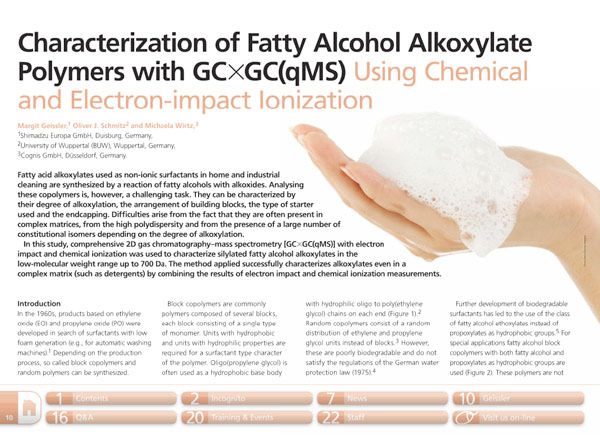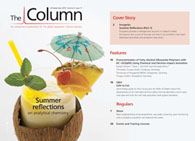Characterization of Fatty Alcohol Alkoxylate Polymers with GCxGC(qMS) Using Chemical and Electron-impact Ionization
In this study, comprehensive 2D gas chromatography-mass spectrometry with electron impact and chemical ionization was used to characterize silylated fatty alcohol alkoxylates.
Fatty acid alkoxylates used as non-ionic surfactants in home and industrial cleaning are synthesized by a reaction of fatty alcohols with alkoxides. Analysing these copolymers is, however, a challenging task. They can be characterized by their degree of alkoxylation, the arrangement of building blocks, the type of starter used and the endcapping. Difficulties arise from the fact that they are often present in complex matrices, from the high polydispersity and from the presence of a large number of constitutional isomers depending on the degree of alkoxylation.
In this study, comprehensive 2D gas chromatography–mass spectrometry [GC×GC(qMS)] with electron impact and chemical ionization was used to characterize silylated fatty alcohol alkoxylates in the low-molecular weight range up to 700 Da. The method applied successfully characterizes alkoxylates even in a complex matrix (such as detergents) by combining the results of electron impact and chemical ionization measurements.
Study Examines Impact of Zwitterionic Liquid Structures on Volatile Carboxylic Acid Separation in GC
March 28th 2025Iowa State University researchers evaluated imidazolium-based ZILs with sulfonate and triflimide anions to understand the influence of ZILs’ chemical structures on polar analyte separation.
Quantifying Microplastics in Meconium Samples Using Pyrolysis–GC-MS
March 26th 2025Using pyrolysis-gas chromatography and mass spectrometry, scientists from Fudan University and the Putuo District Center for Disease Control and Prevention detected and quantified microplastics in newborn stool samples.














